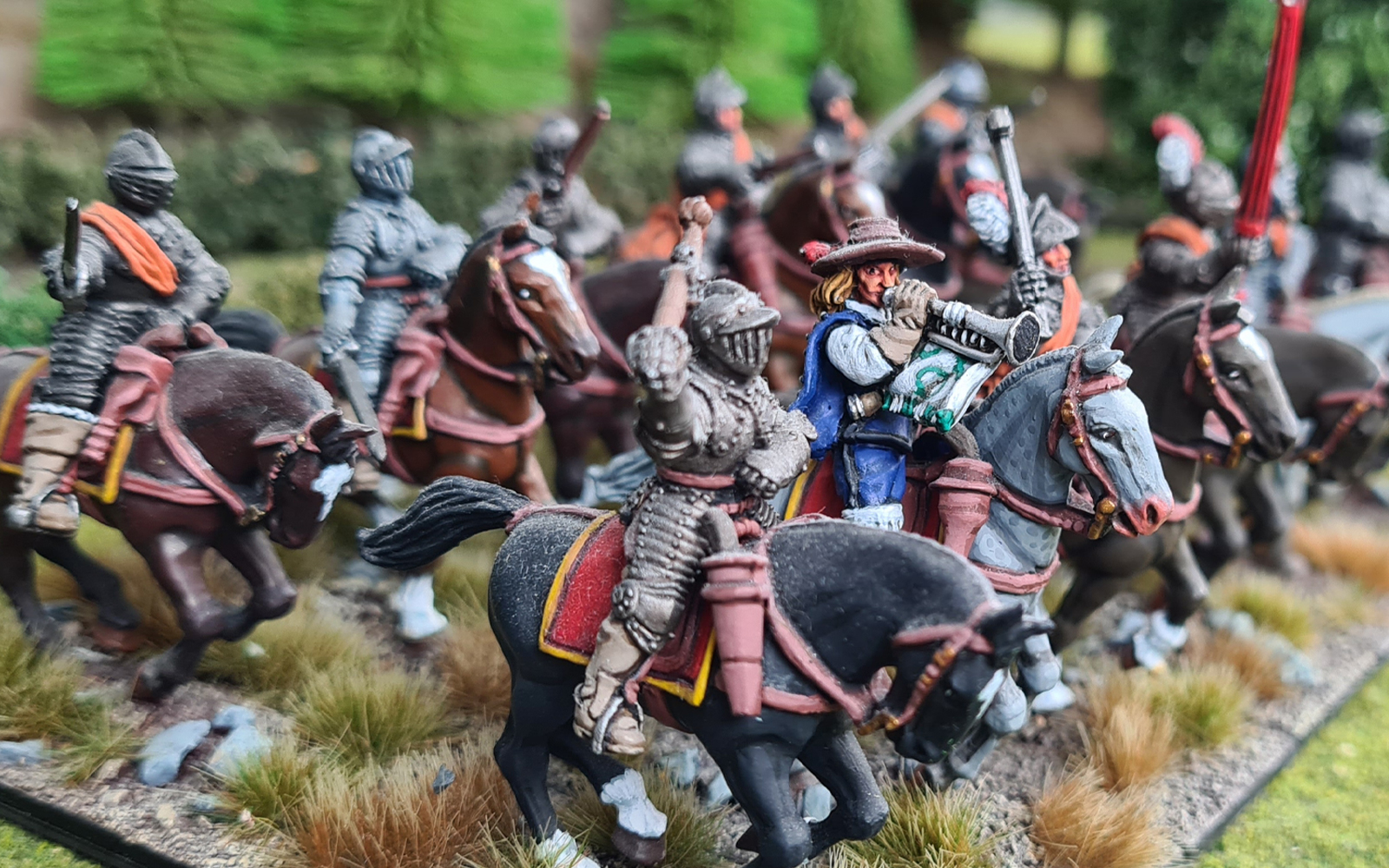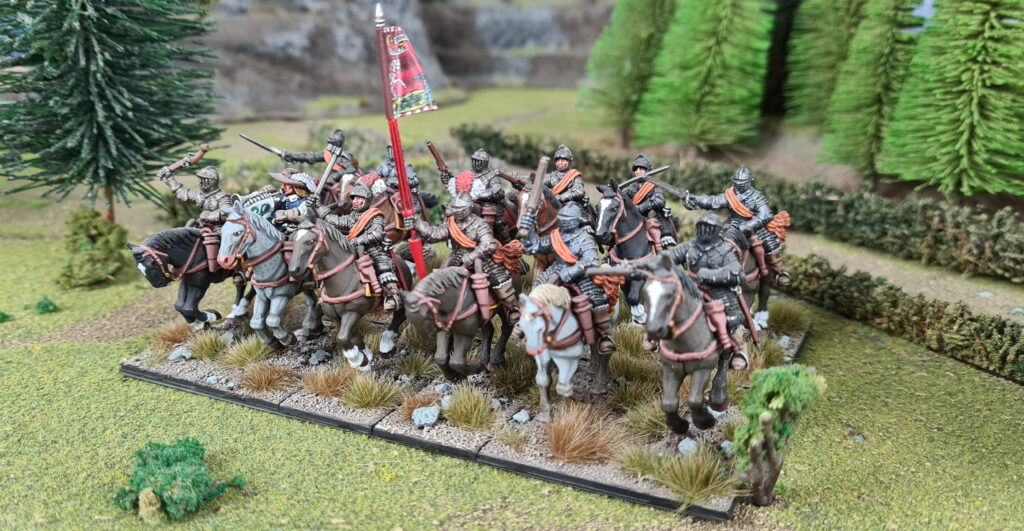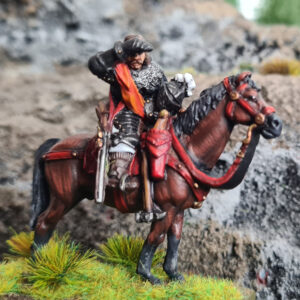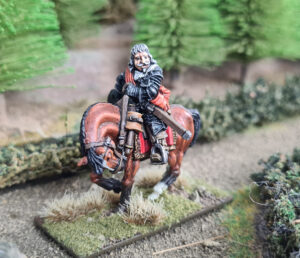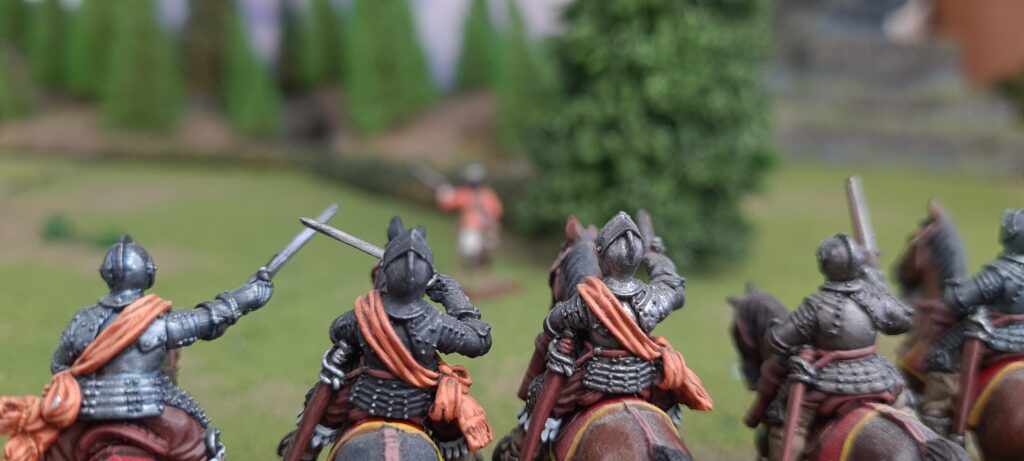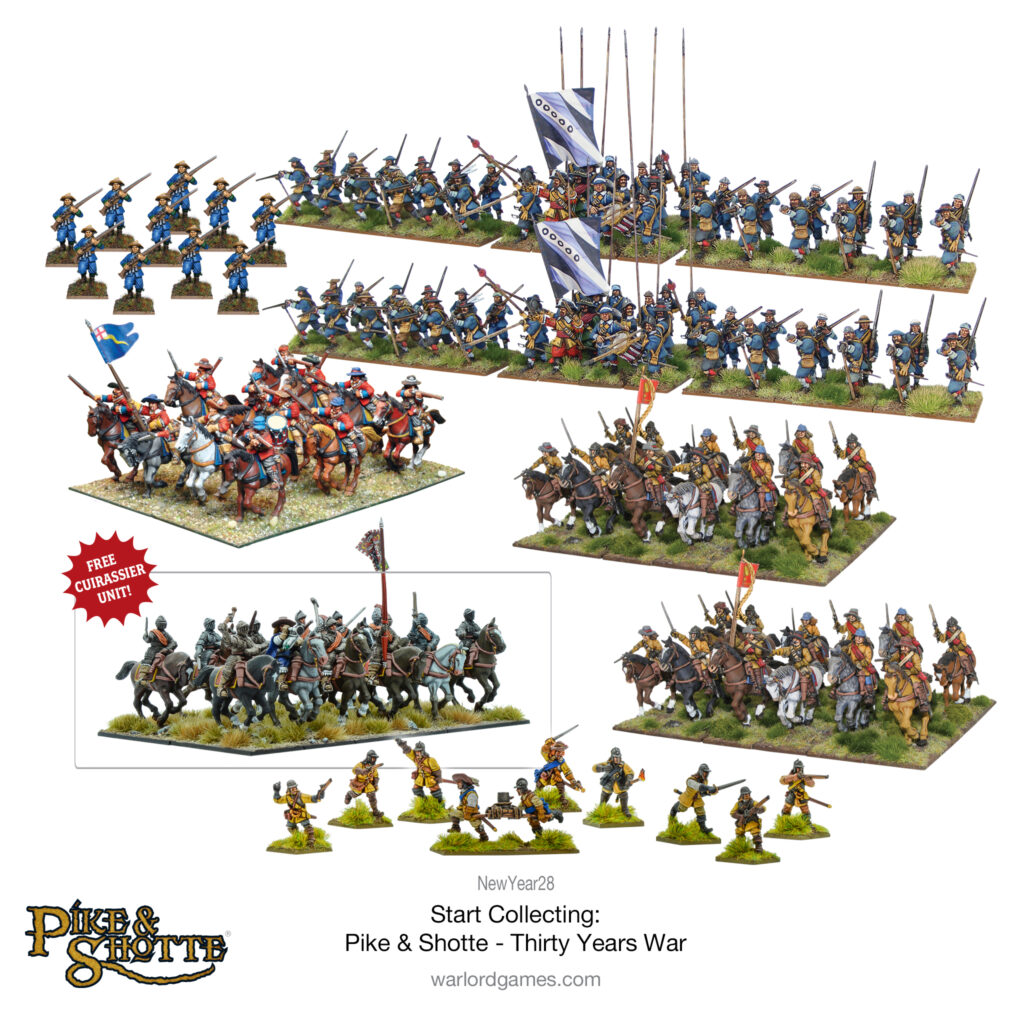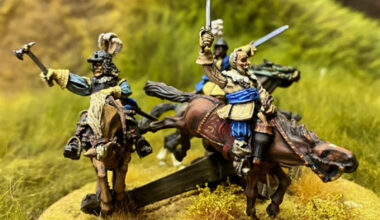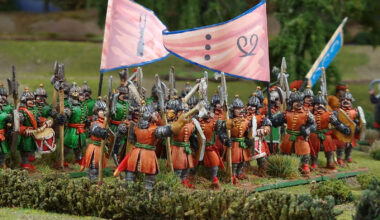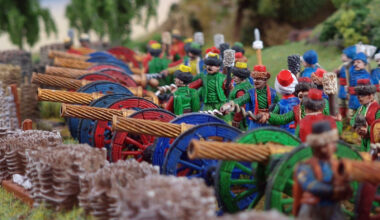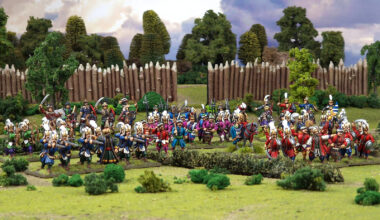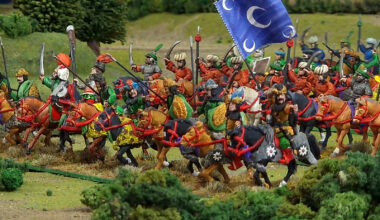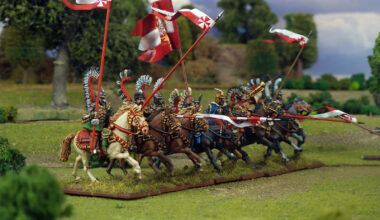Last time in Forces of Fame (a new regular series in which we shine a light on particularly well-known units across all of our game systems) we took to the war-torn Atlantic with Bismarck, and today’s subject is in many ways strangely similar – both are heavily armoured, mobile, and boast some serious firepower. Really, the only difference is a little matter of a few centuries, oh and floating versus riding, of course.
Let’s take a look at the cream of C17th heavy cavalry – the mighty, proud (and very expensively equipped) Cuirassiers!
The final gasp of the fully-harnessed cavalryman on the western European battlefield, the cuirassier of the C17th combined the elan of his knightly predecessors with the latest advances in modern technology. Clad from head to knee in beautifully articulated armour of the latest continental fashion and wielding a brace of (usually wheellock) pistols, the cuirassier managed to retain his relevance well into an era rapidly becoming dominated by the pike and shotte armed infantry formations.
Having abandoned the lance as impractical in a world of pikemen, the cuirassier remained at heart a heavy cavalryman, thundering into contact with the enemy in a cloud of pistol smoke and laying about himself with a lethal pickaxe or the butts of his guns. Against “lesser” enemies, the cuirassier armour (the origin of the name – “cuirassier” simply means “one who wears a cuirass”) was virtually impregnable to sword blows, and was designed and “proofed” against pistol shot. At Roundaway Down, the Parliamentarian officer Sir Arthur Haselrig (of “London Lobsters” fame) was shot three times at close range, with the balls ricocheting harmlessly from his harness. He was only brought down when his unarmoured horse was killed – usually the only sure way to stop a rampaging cuirassier!
More popular on the Continent during the Thirty Years War than in England due to their great cost, which could be up to three or four times that of outfitting a lighter cavalryman, the cuirassier did see limited service in the English Civil Wars. Two regiments were raised, both by the Parliamentarian side – the Lifeguard of the Earl of Essex, and Haselrig’s “Lobsters”, so named for their hard, shiny shells. These were almost certainly the last cavalry to fight in England in full harness, and likely some of the last in Europe, as their era was rapidly coming to an end with the rapid advance of firearms technology.
A particular speciality of the Continental cuirassiers was the caracole – a tactic whereby the unit would approach the enemy at speed, each cuirassier discharging his pistols as he came into range before wheeling away to reload. Arguably a descendant of the legendary “Cantabrian Circle” of antiquity, this tactic was not without risks. Against cavalry, it was vulnerable to a counter-charge, as the Lobsters found out to their cost at Roundaway Down. On the tabletop, the caracole is represented by allowing your cuirassiers to access the Closing Fire order, something denied to many other cavalry units.
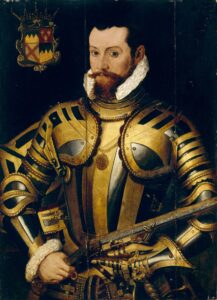
Aside from the caracole, the cuirassiers are quite simply hard as nails on the table. A unit of them is usually more than enough to force your opponent to think very hard about how to counter them, and when they charge home with either pistol or axe, they can decimate entire regiments with brutal ease.
The models too are absolutely beautiful; lending themselves to drybrushing. It’s surprising how easy it is to produce a great “blackened” armour finish on these models. For those who prefer the earlier end of the Pike & Shotte period, they can be made, simply using a different (albeit rather trickier) paint job, into thoroughly acceptable substitute cavalry in the “Greenwich”-style harness of the Tudor period.
Saddle the horses, don your harness and charge your pistols. We ride to glory!
Start collecting the Pike & Shotte with this convenient bundle. Get the solid core of a Thirty Years War force via the Battalia Starter embellished with Dragoons, Harquebusiers and a Storming Party. Just to top it off, the cuirassiers come free:
Other articles in the Forces of Fame Series:
Bolt Action – The Tiger I; Princess Elizabeth (Jubilee Special); Japanese Special Naval Landing Force; M18 Hellcat; Centurion Mk III; British Airborne; M4A3E8 Sherman ‘Easy Eight’; German Fallshirmjäger; FlaK 88; Panzer IV (Early War); Matilda II; T-34/76; Panzer 38(t); IS-2;
Blood Red Skies – Messerschmitt Bf 110; Ki-43 II ‘Oscar’; Grumman F9F Panther; Vought F4U Corsair;
Victory at Sea – The Bismarck; Fletcher-Class Destroyers; Kongō; Yamato-class Battleships;
Pike & Shotte (& Pike & Shotte Epic Battles) – Polish Winged Hussars; Dragoons;
Black Powder (& Black Powder Epic Battles) – The Iron Brigade; 95th Rifles; Zulus;
Black Seas – HMS Victory;
Hail Caesar / SPQR – Dacian Falxmen; Hoplites;
